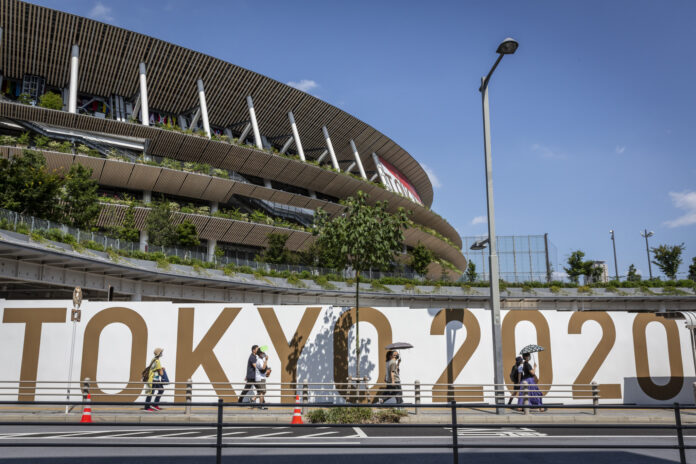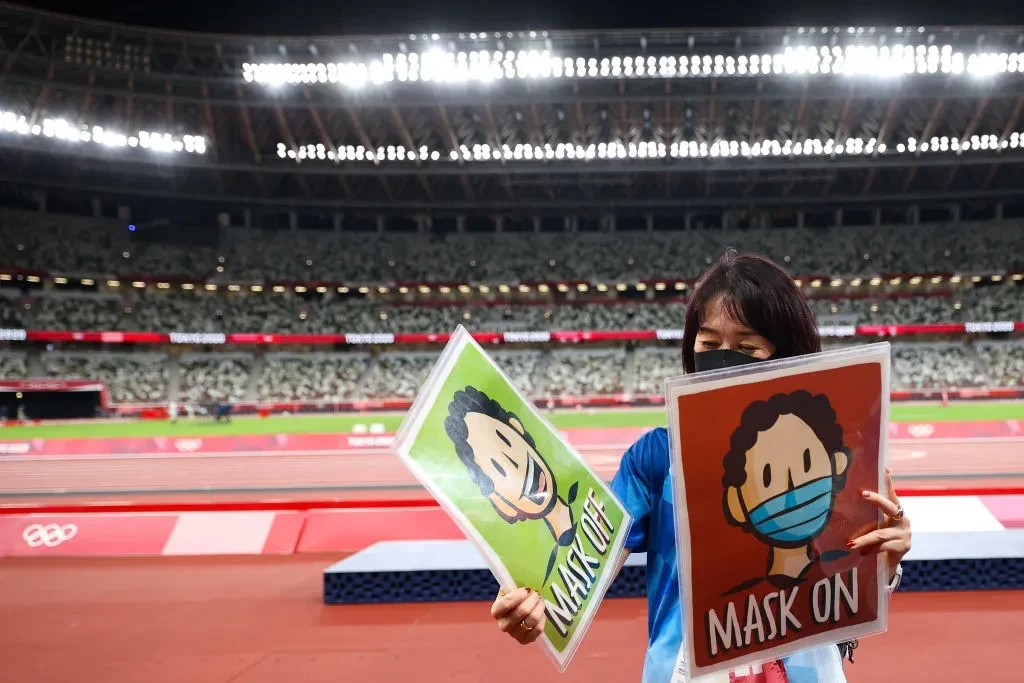
The final bill for the re-arranged 2020 Olympic and Paralympic Games in Tokyo has been revealed today at ¥1,423.8 billion (£8.51 billion/$10.45 billion/€9.91 billion).
It is a figure twice as much as budgeted when Japan was awarded the Games, but ¥29 billion (£174 million/$213 million/€202 million) less than what was forecast last December.
The figure was revealed during the last Tokyo 2020 Executive Board meeting before the organisation is officially wound up at the end of this month.
Tokyo 2020 was, not surprisingly, keen to portray the final figure as a triumph having managed to stage the Games in unprecedented conditions.
It claimed, thanks to the efforts made to increase revenues and continuously review expenditures, the Organising Committee achieved a balanced budget of ¥640.4 billion (£3.8 billion/$4.7 billion/€4.6 billion).
Finances were also boosted, it is revealed, by an insurance pay-out of ¥50 billion (£300 million/$370 million/€350 million) for the postponement of the Olympic and Paralympics in 2020 due to the COVID-19 pandemic.
The final bill for the coronavirus countermeasures came in at ¥35.3 billion (£209 million/$257 million/€244 million).
When Tokyo was awarded the 2020 Olympic and Paralympic Games in September 2013, beating rivals Istanbul and Madrid, the budget was ¥734 billion (£4.4 billion/$5.4 billion/€5.1 billion).
A new budget was announced in December 2016 and Tokyo 2020 claimed that the final figure was ¥76.2 billion (£455 million/$557 million/€529 million) less than that.
“We made an estimate, and the estimate has gone down lower than we expected,” Tokyo 2020 chief executive Toshiro Muto said at the end of the meeting.
“As a total amount, whether this is huge or not – when it comes to that kind of talk it is not easy to evaluate.”
Venues’ restoration work costing less than expected, along with other reasons, contributed to the decrease in the final figure to that predicted in December.
The cost of building the venues, including reconstruction of the National Stadium, accounted for ¥865 billion (£5.2 billion/$6.4 billion/€6.1 billion), while operational costs including transport and security totalled ¥524 billion (£3.1 billion/$3.8 billion/€3.6 billion), the final report revealed.
In terms of expenditure, ¥195.5 billion (£1.2 billion/$1.4 billion/€1.4 billion) went on venue-related costs, such as temporary infrastructure and technology, and ¥444.9 billion (£2.7 billion/$3.3 billion/€3.1 billion) for service expenditures such as competition and venue operations, transportation and security.
The total expenses specifically related to the Paralympic Games were ¥151.4 billion (£903 million/£$1.2 billion/€1.1 billion).
The report claimed the difficult decision to go ahead with virtually no spectators meant that, instead of ¥90 billion (£540 million/$660 million/€627 million) in ticket sales, they earned only ¥400 million (£2.4 million/$2.9 million/€2.8 million), but the decision helped stem the flow of people and spread of the virus.
The official Tokyo 2020 report handed to the IOC claimed “prioritising the ensured safety and security” amid the pandemic resulted in most venues having no spectators.
But it allowed for the Tokyo Games to fulfil its “responsibility” in “hosting and passing on the Olympics and Paralympics that cities across countries have over the generations.”
“It is a mission of everyone who was involved in the Games to inherit its legacy to next generations,” Tokyo 2020 President Seiko Hashimoto said at the start of the meeting.
Tokyo 2020 is to cover ¥640 billion (£3.8 billion/$4.7 billion/€4.4 billion) of the total, with the Metropolitan Government paying ¥597 billion (£3.6 billion/$4.4 billion/€4.1 billion) and the national Government ¥187 billion (£1.1 billion/$1.4 billion/€1.3 billion).
The lack of ticket sales hit the bottom line of Tokyo 2020 hard but local sponsorship sales of ¥376.1 billion (£2.2 billion/$2.8 billion/€2.6 billion) helped plug the gap.
Other primary sources of revenues for Tokyo 2020 included the IOC contribution of ¥86.8 billion (£520 million/$638 million/€606 million) and The Olympic Programme – TOP – sponsorship of ¥56.9 billion (£341 million/$418 million/€397 million).
Hashimoto used the final report as an opportunity to pay tribute to former Tokyo 2020 President Yoshirō Mori, who stepped down in February last year following his remarks about women.
“I could do the job because of what Mr. Mori had built before,” said Hashimoto, who was the Olympic Minister before taking over at the head of Tokyo 2020 only five months before the start of the Games.
“I’m still grateful.”
The introduction of urban sports such as skateboarding provided an appeal to youth, the Tokyo 2020 report claimed, with the Games also serving as an opportunity to show the world Japan’s recovery following the devastating 2011 earthquake, tsunami and nuclear disaster.
Tokyo 2020 revealed that they had last month shared their knowledge with Paris 2024, when they also made Games reform proposals such as a shorter preparation period and fewer stakeholders attending to alleviate the burdens for the hosting cities.









































